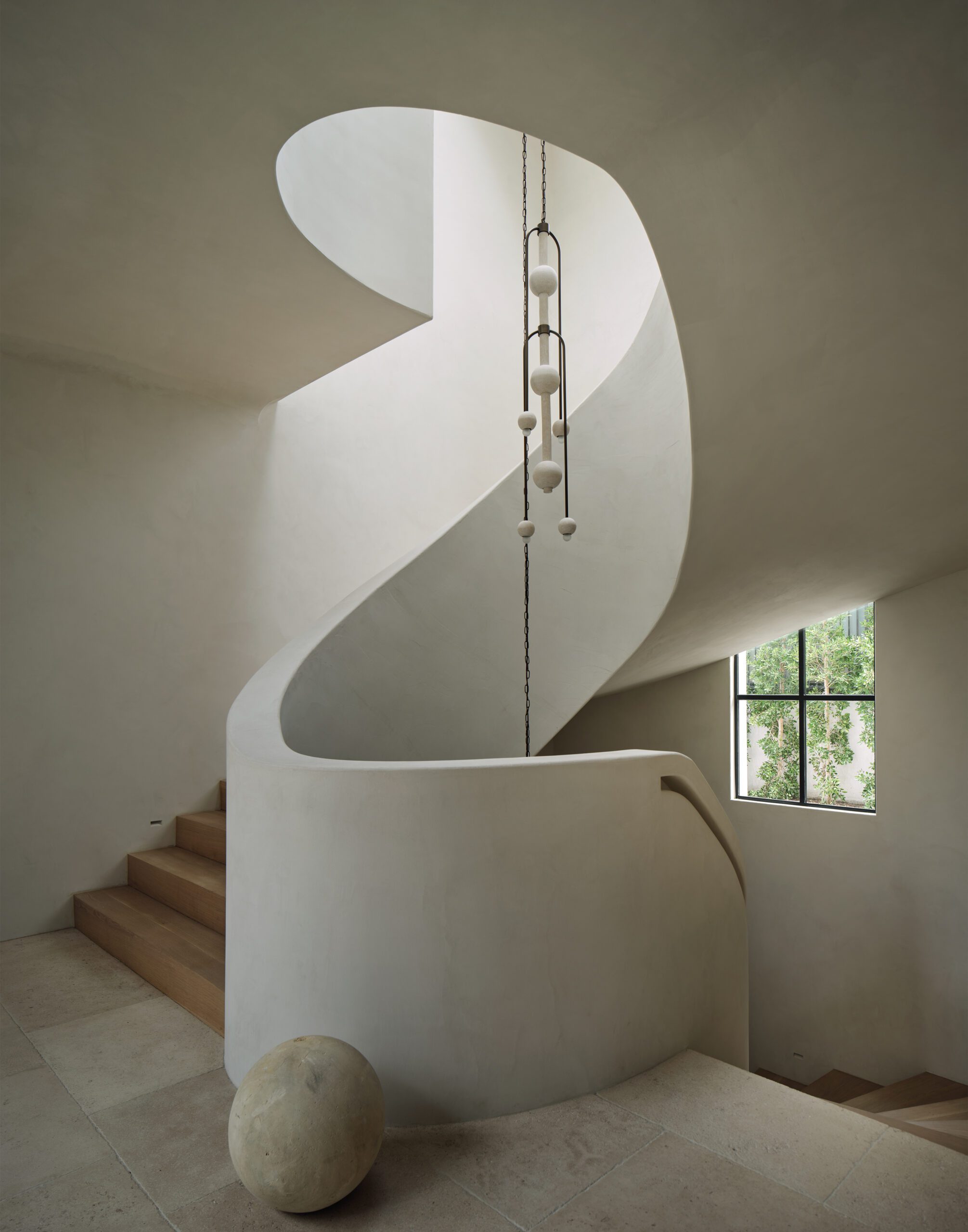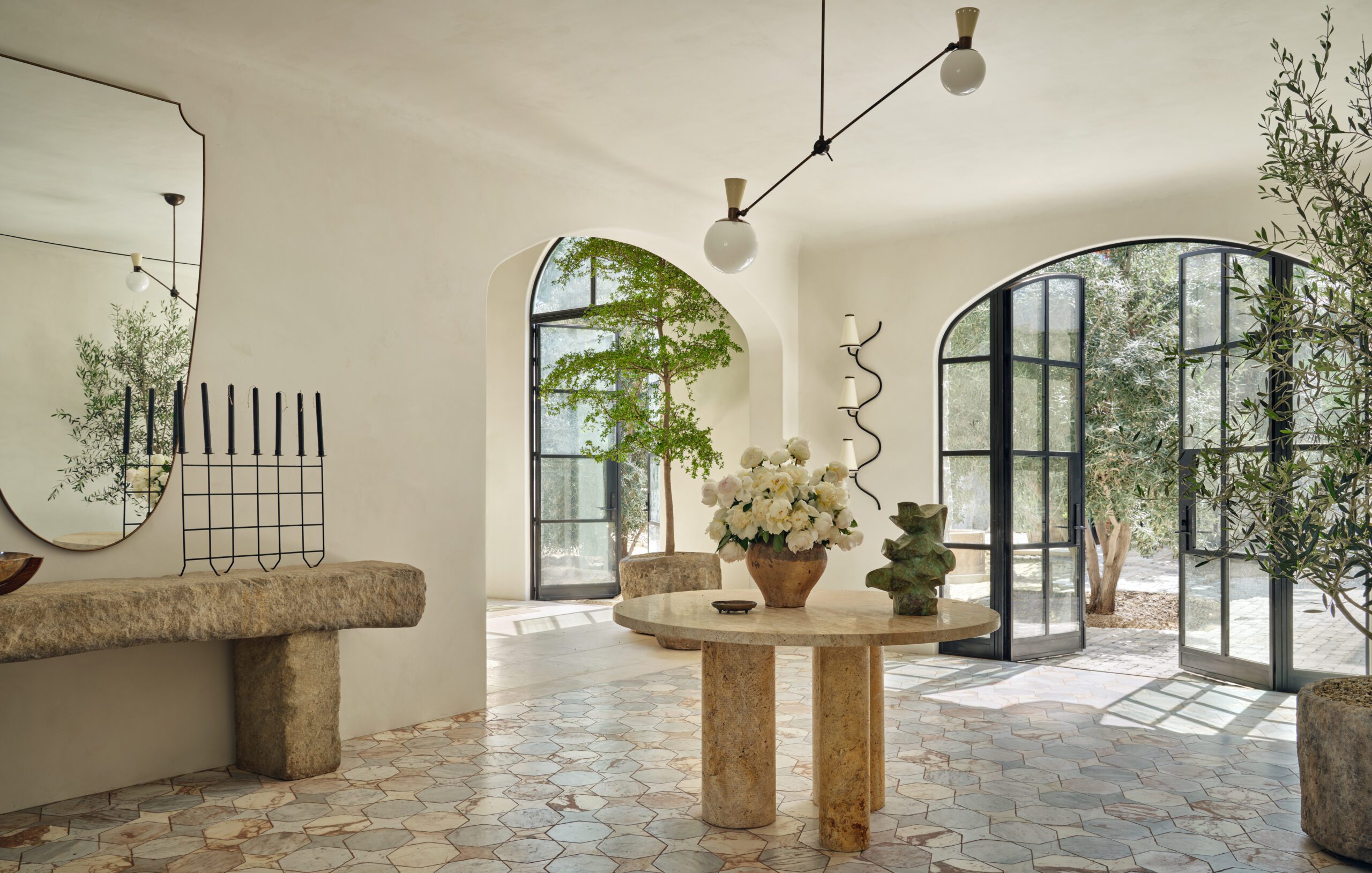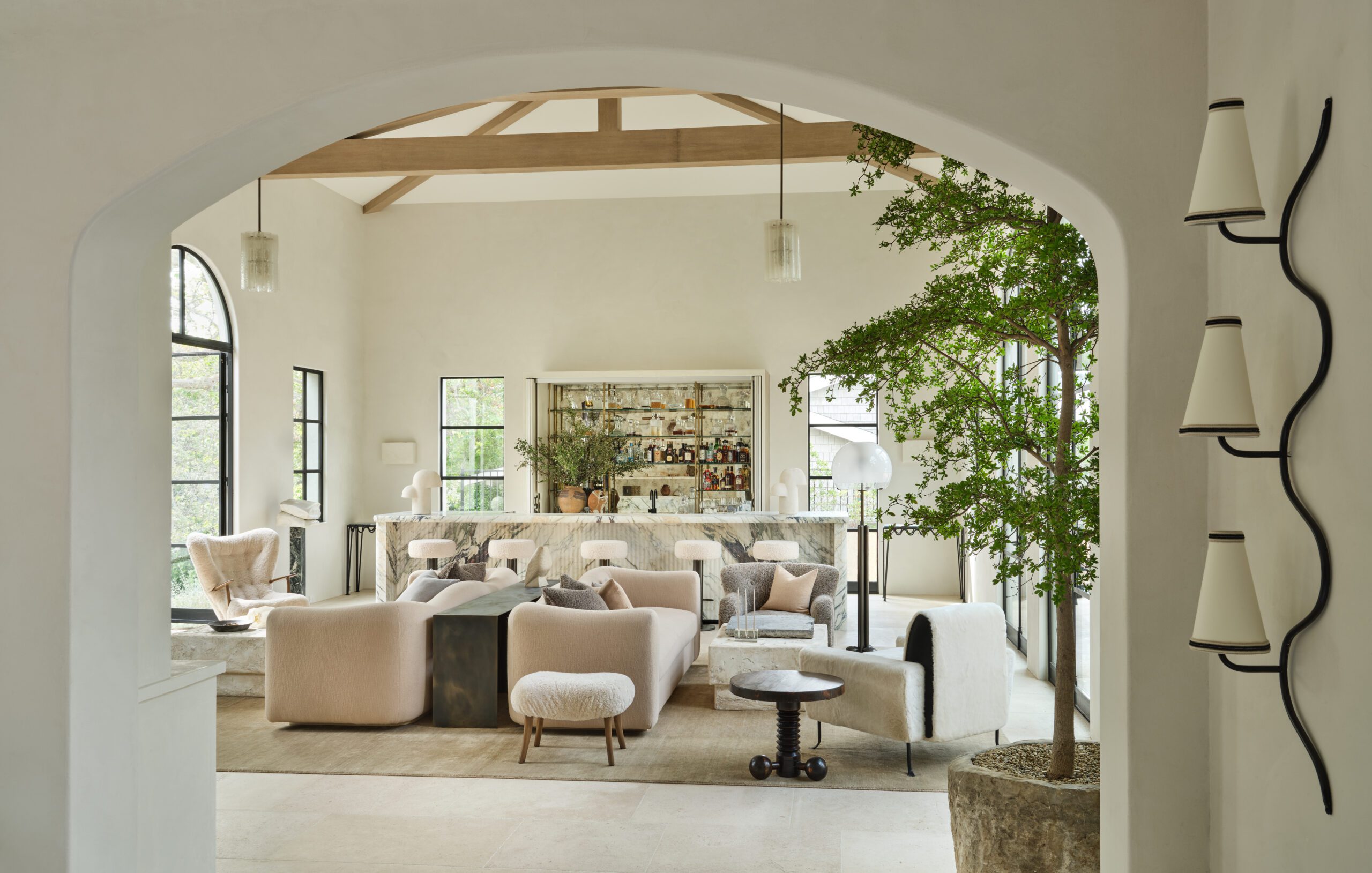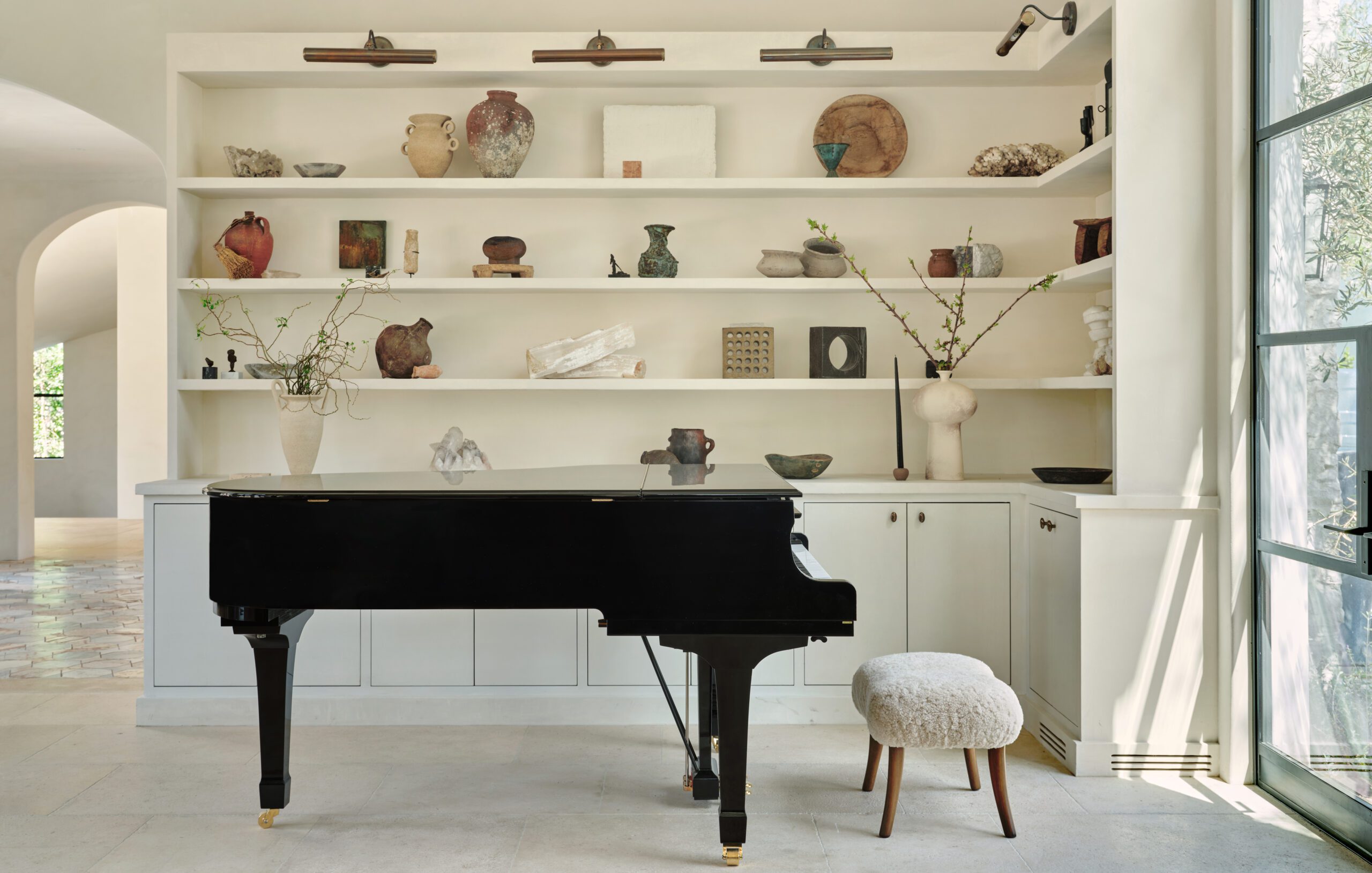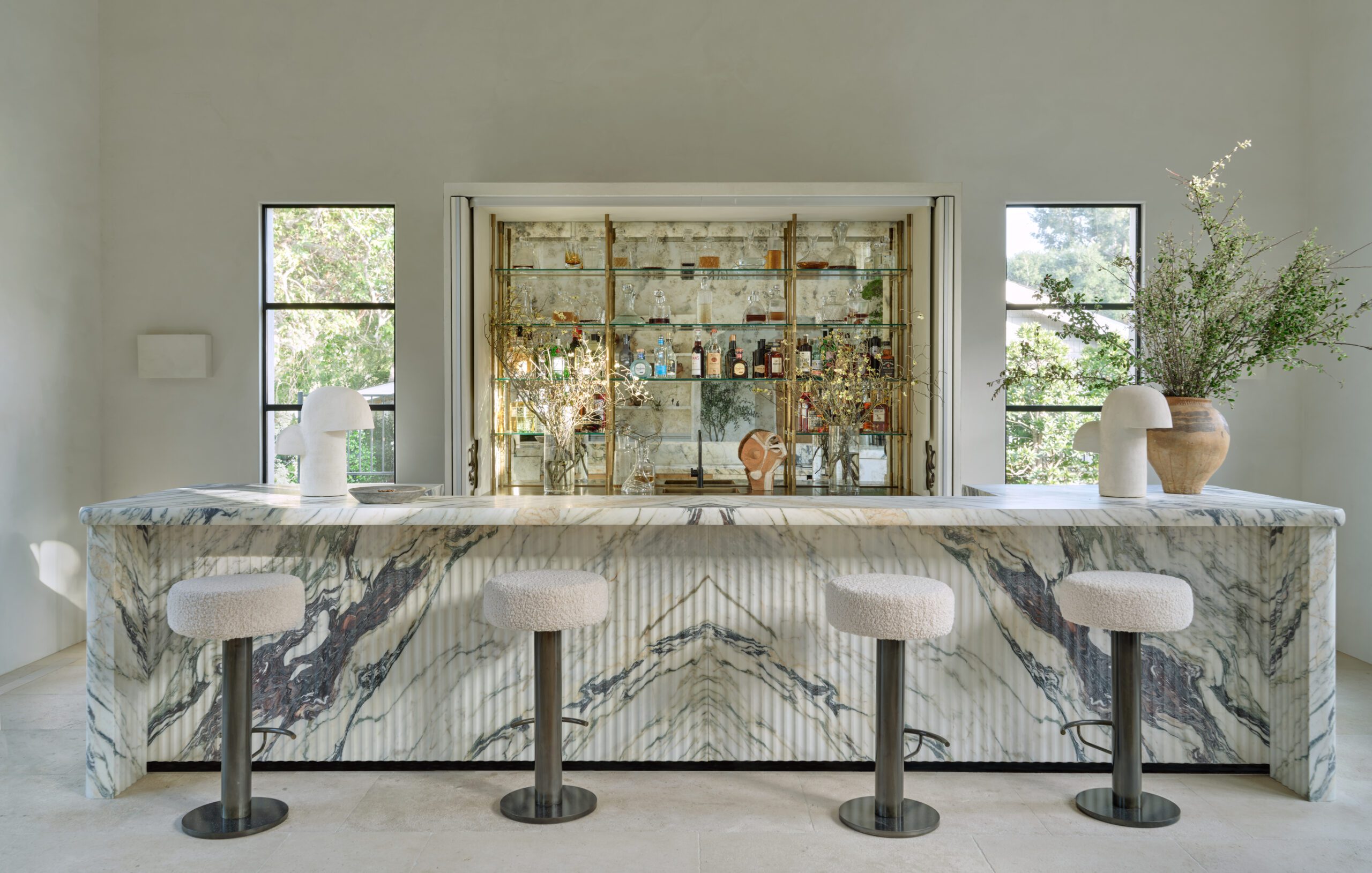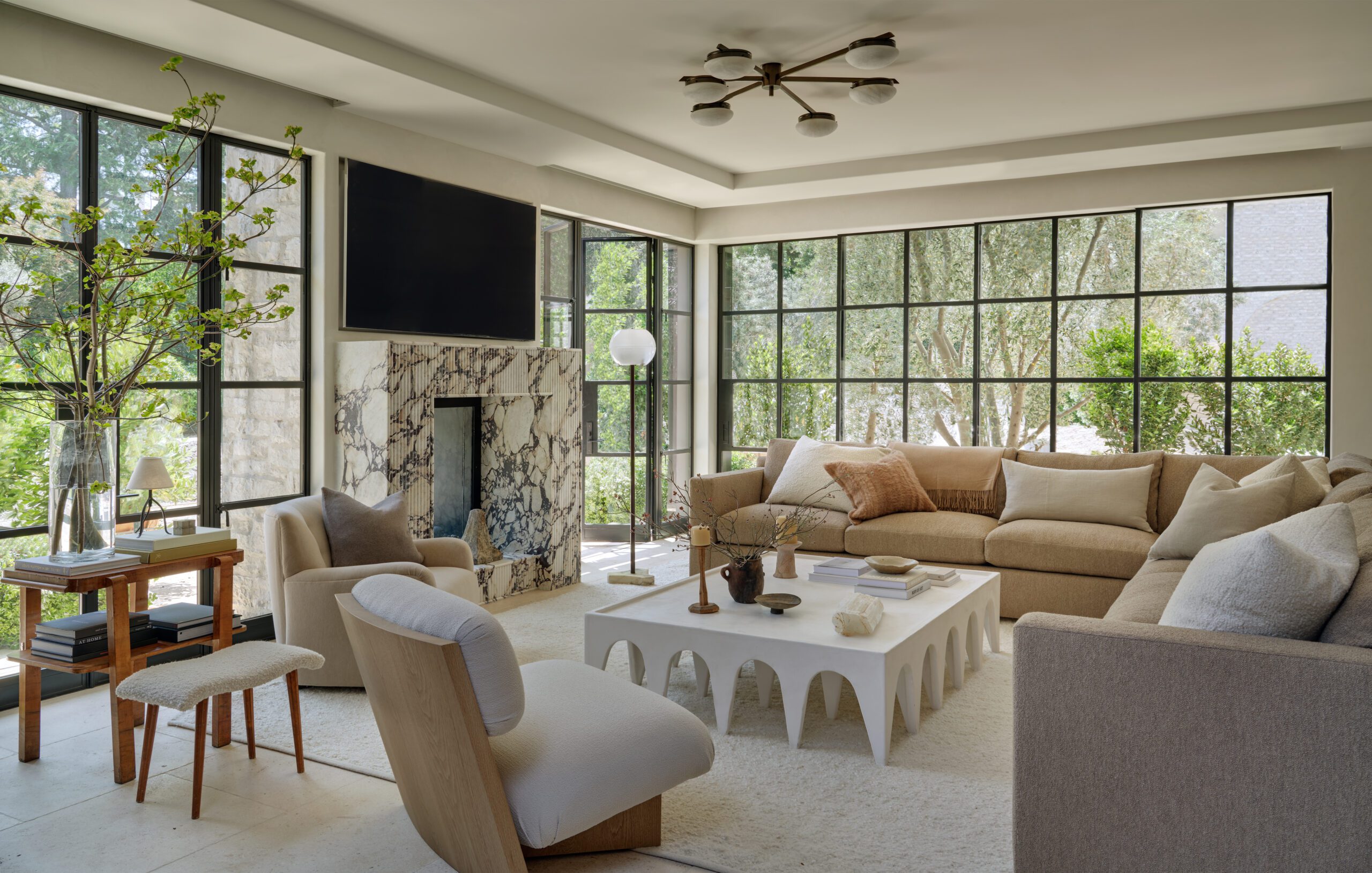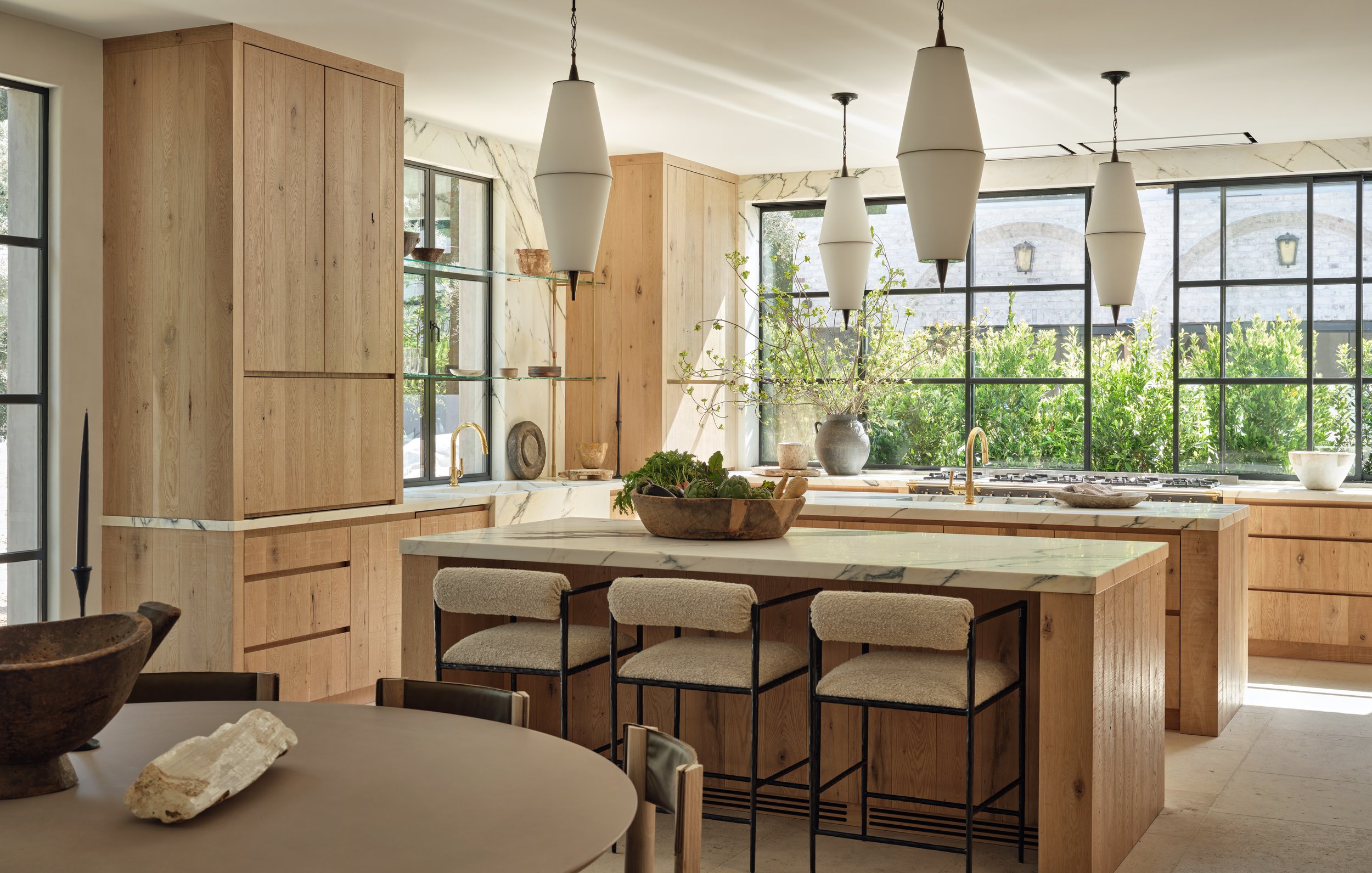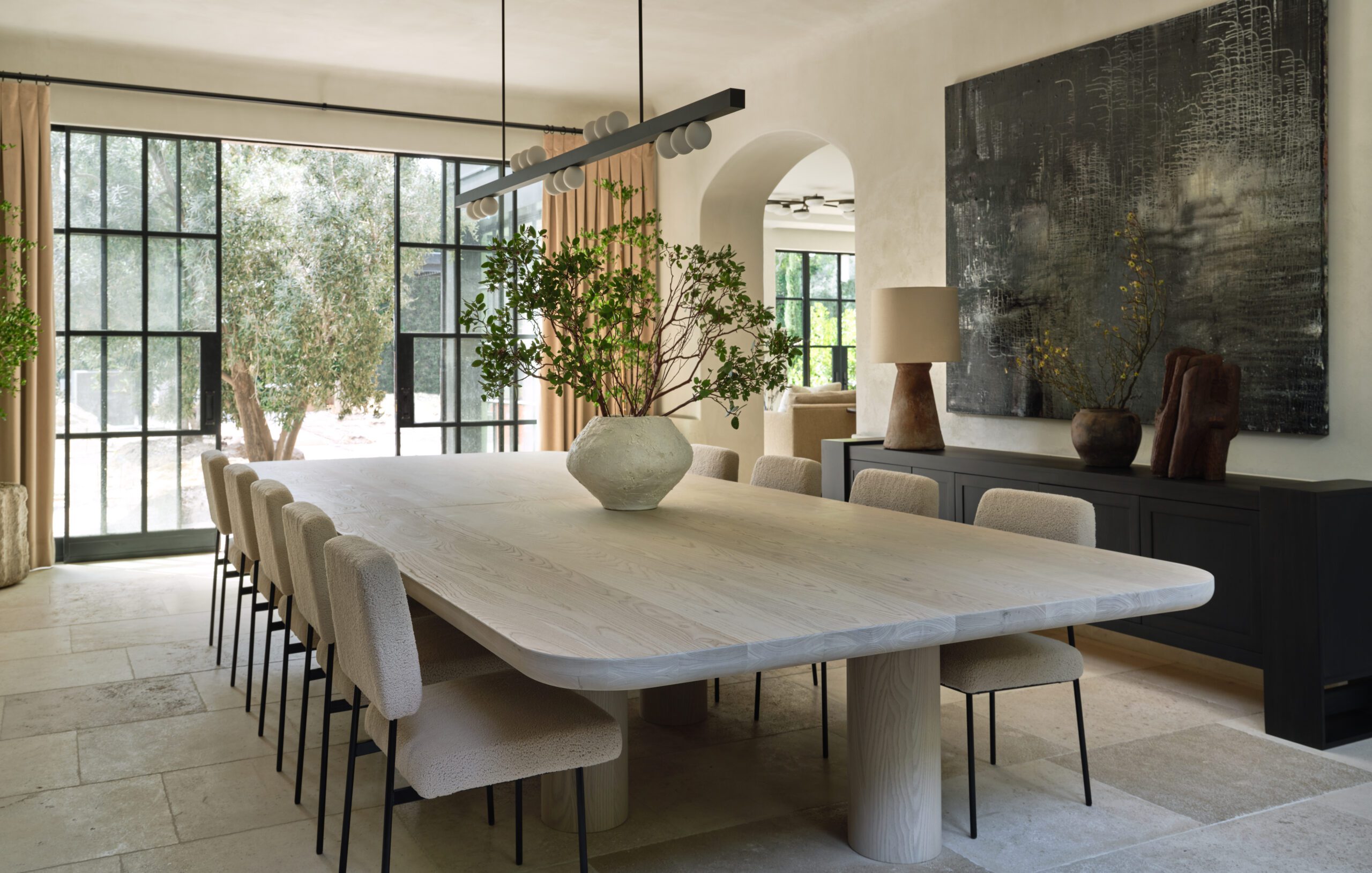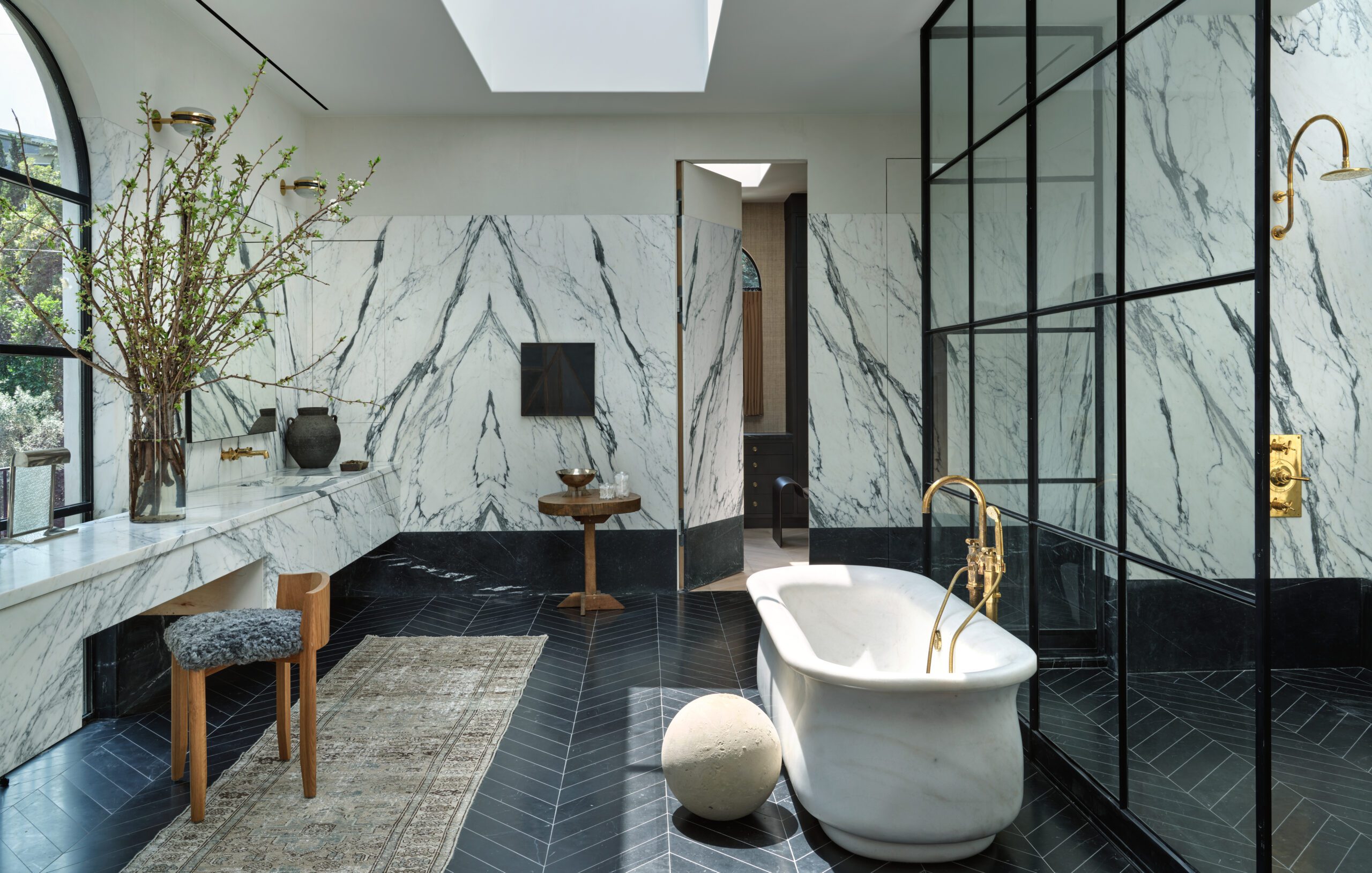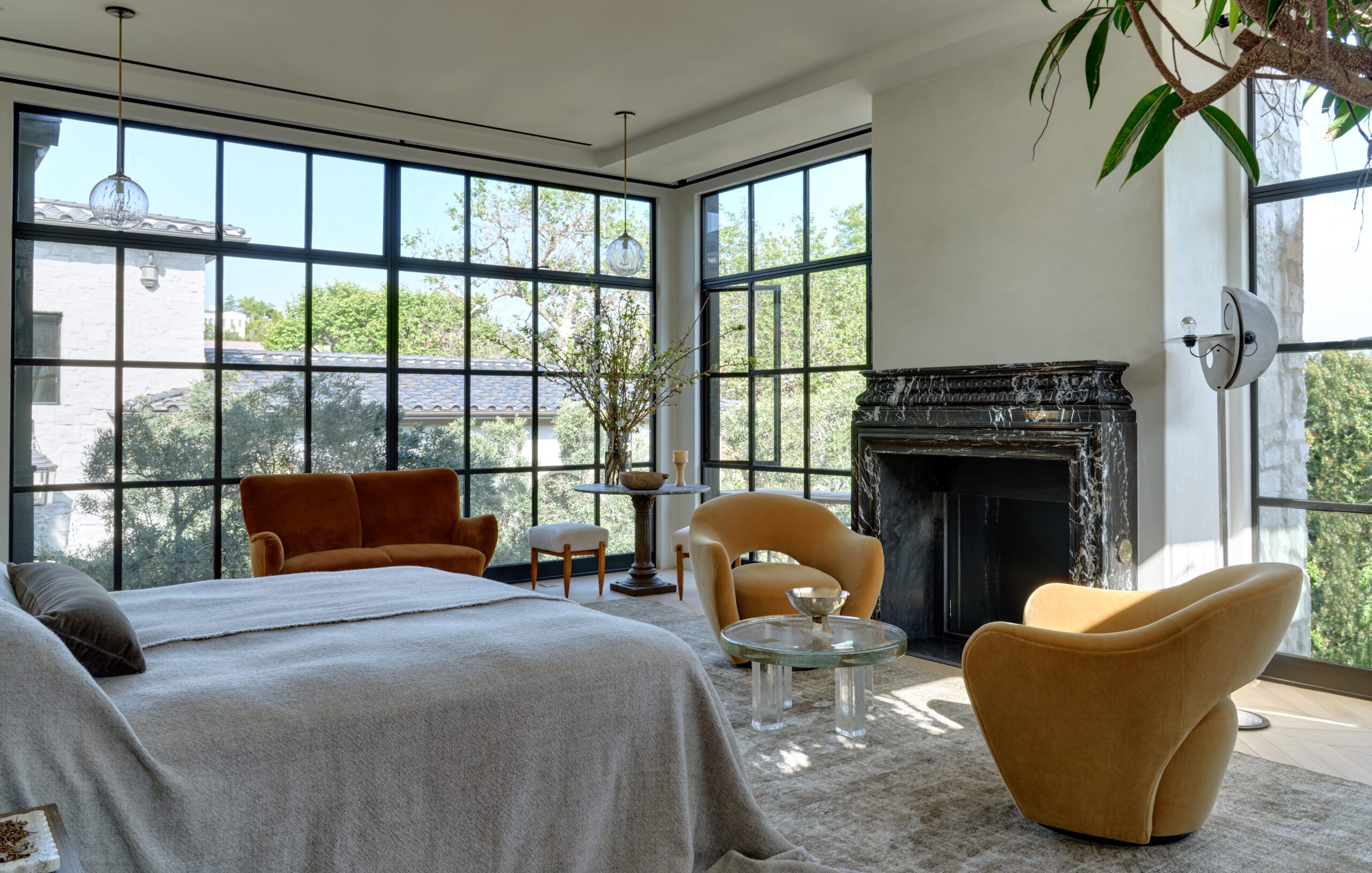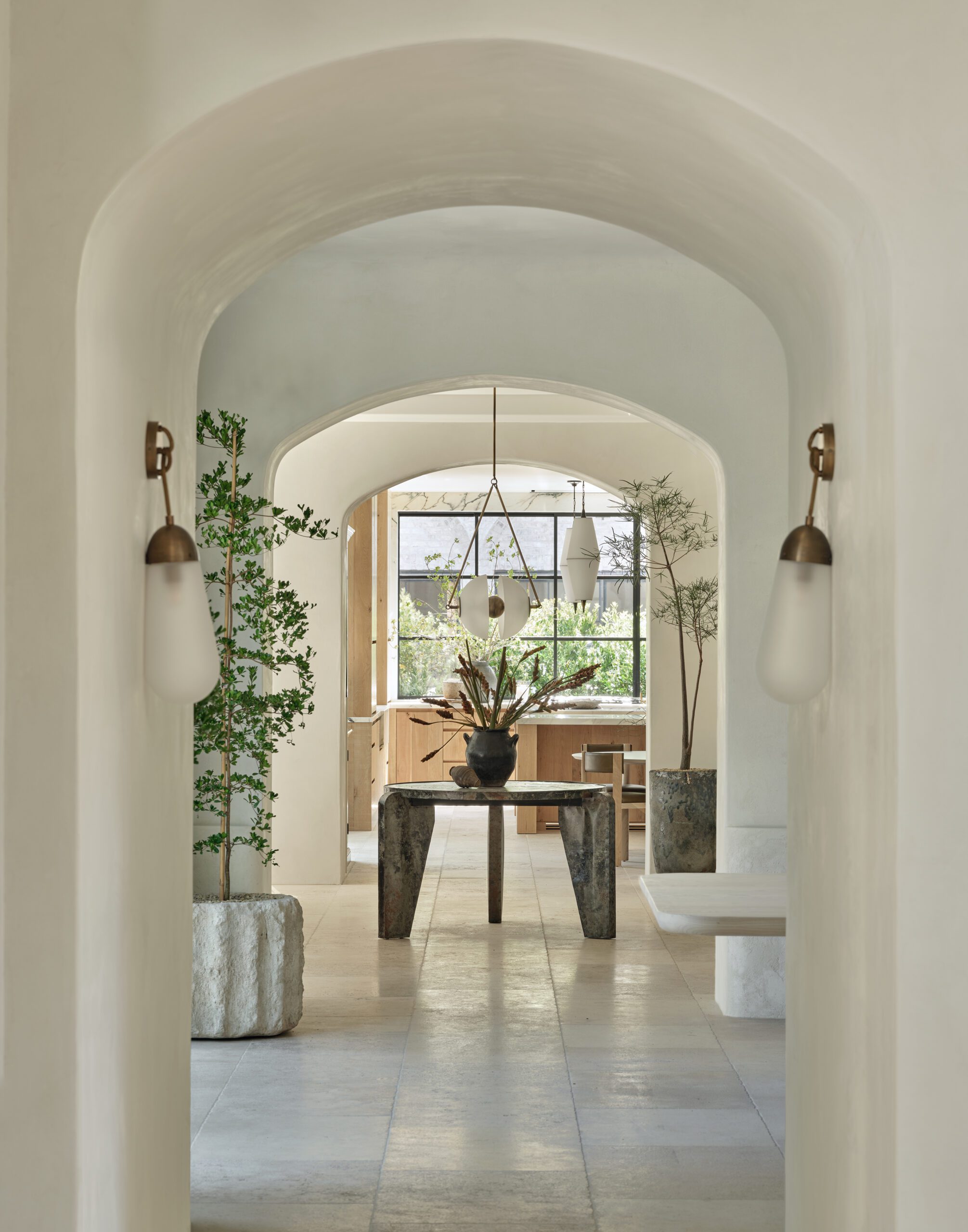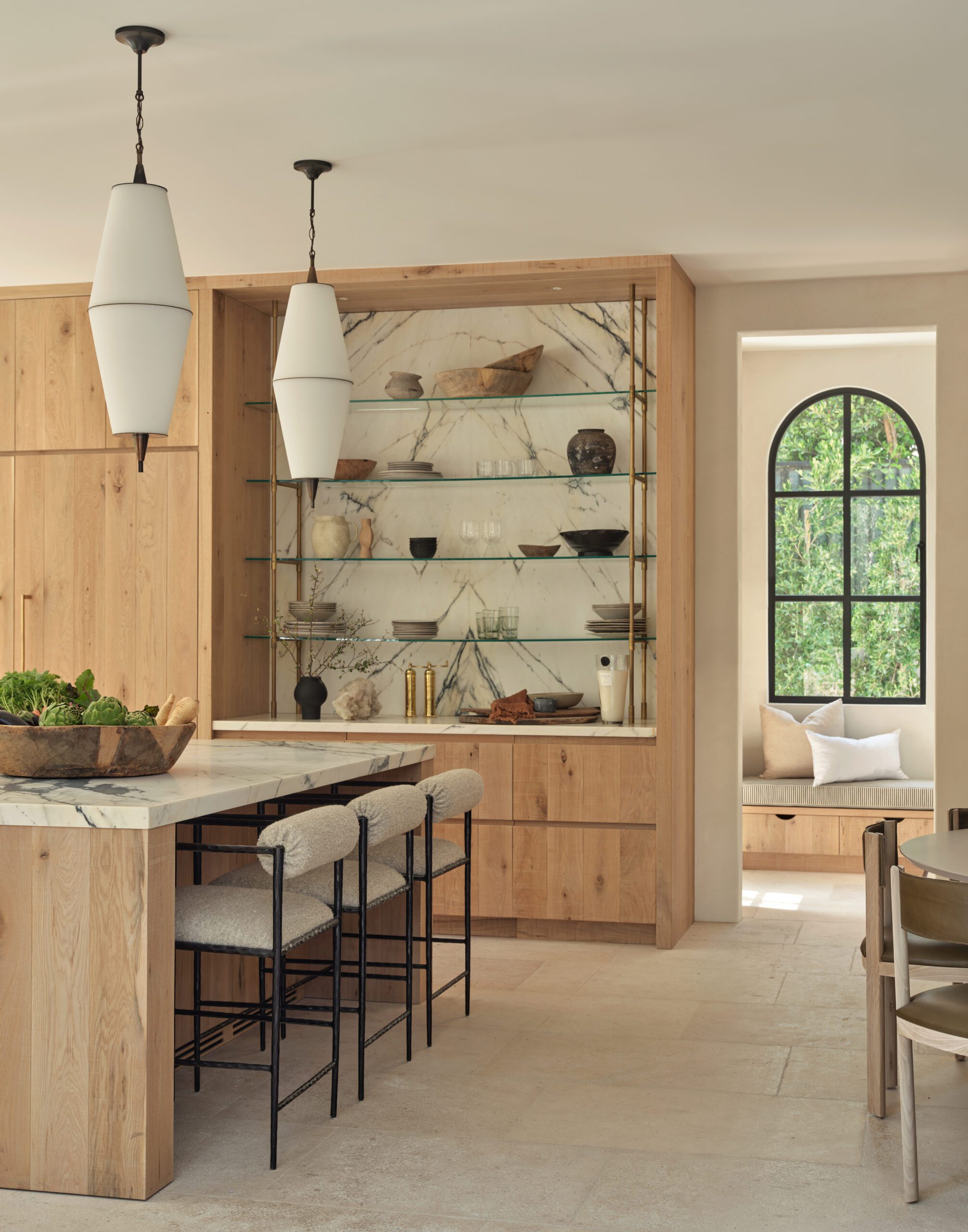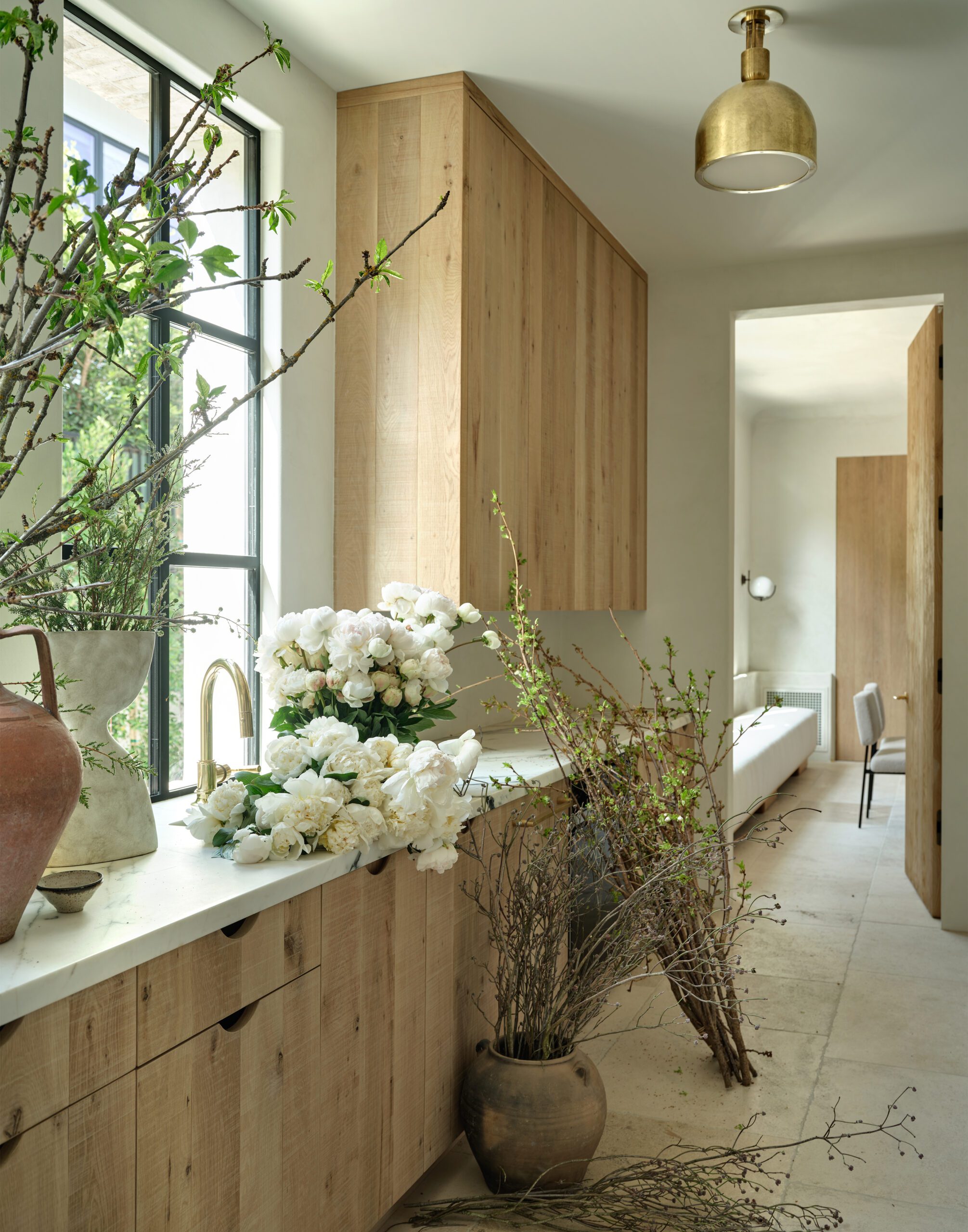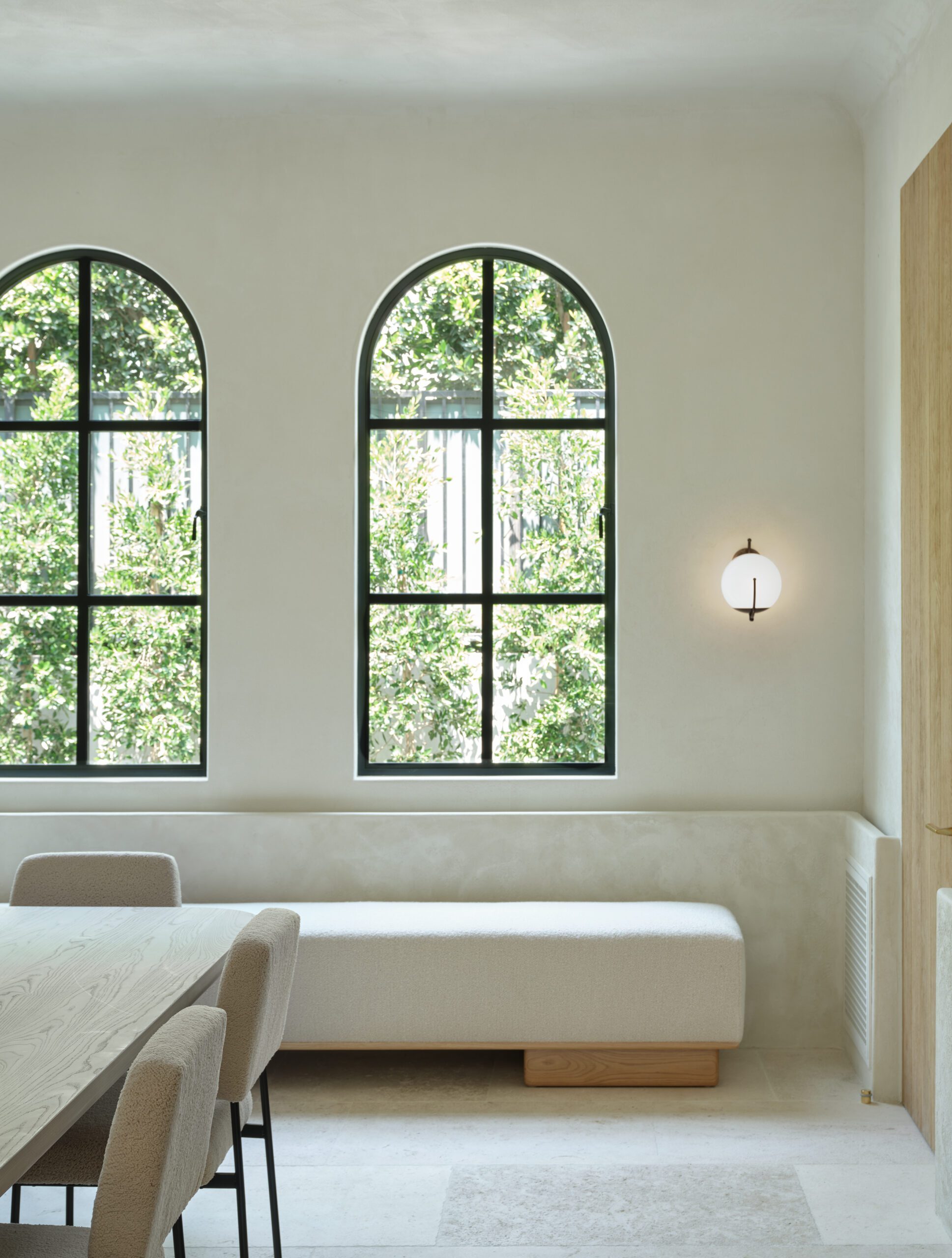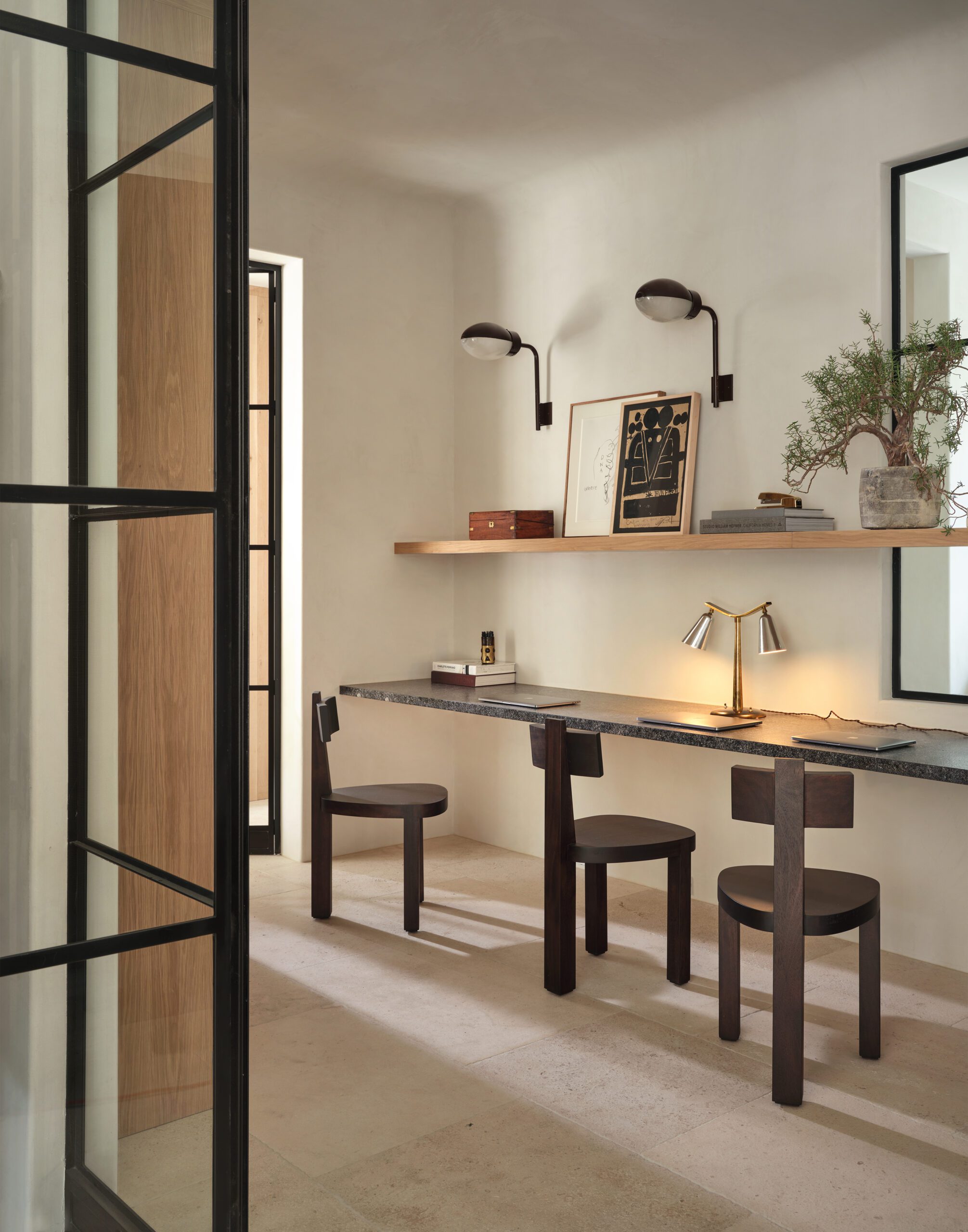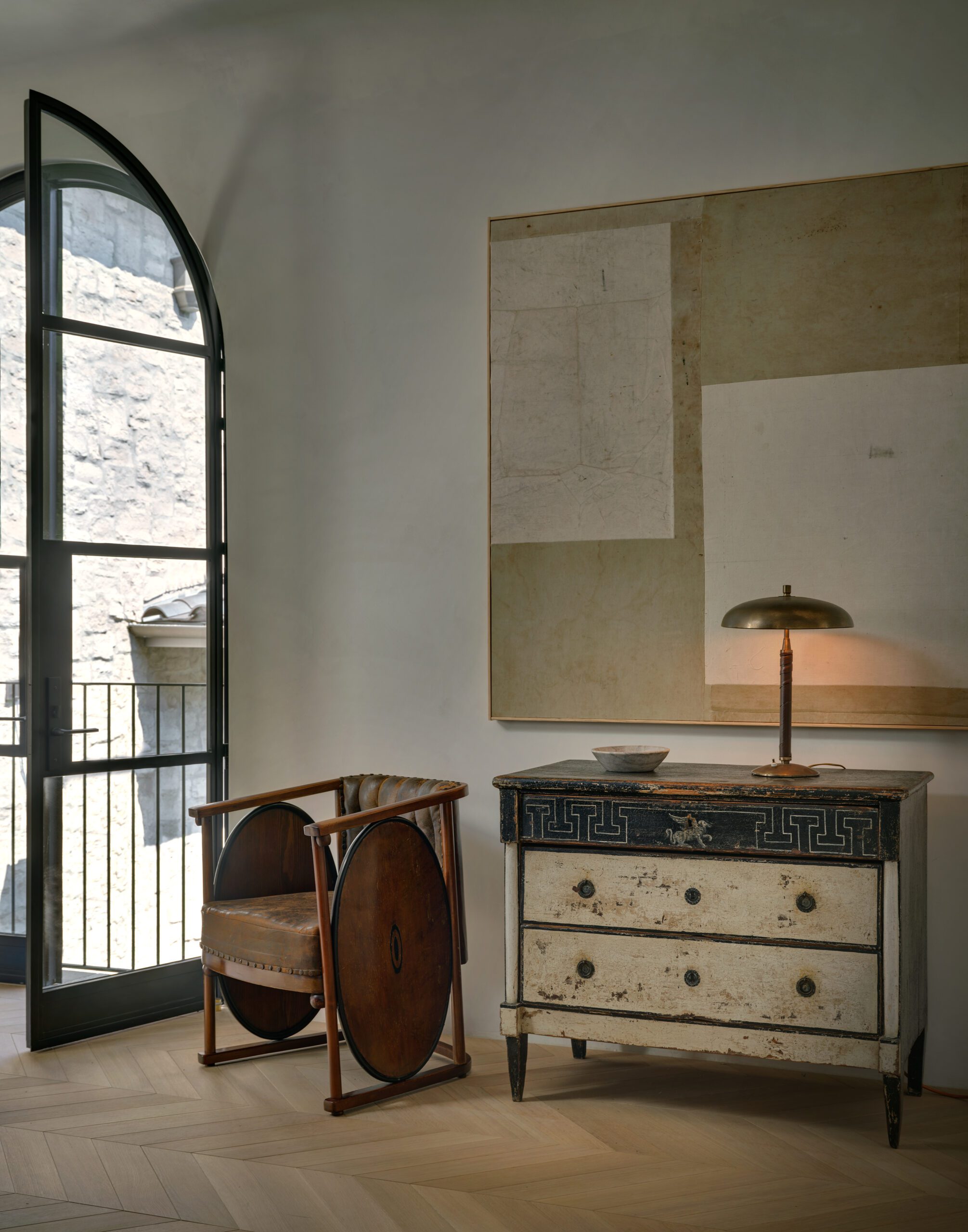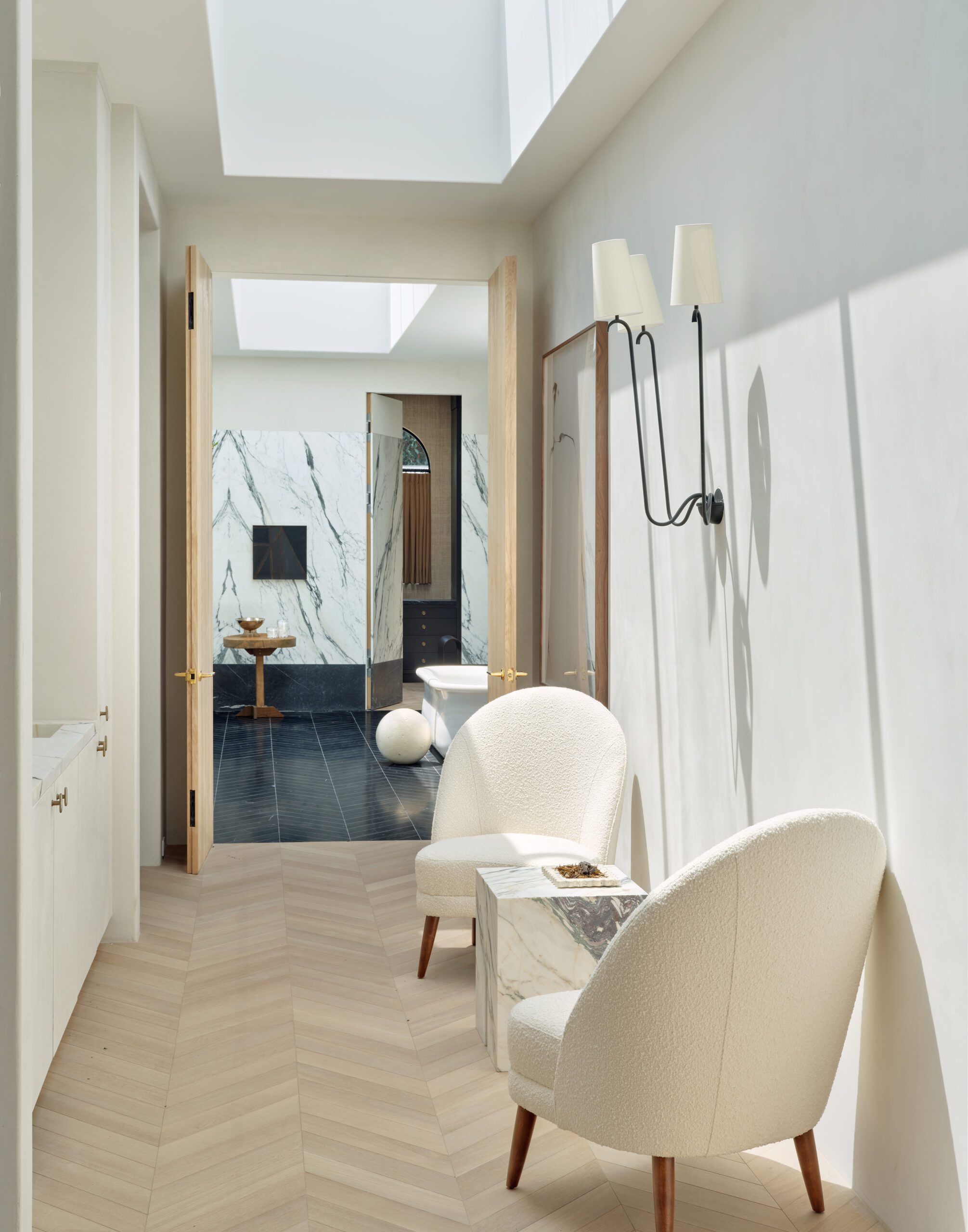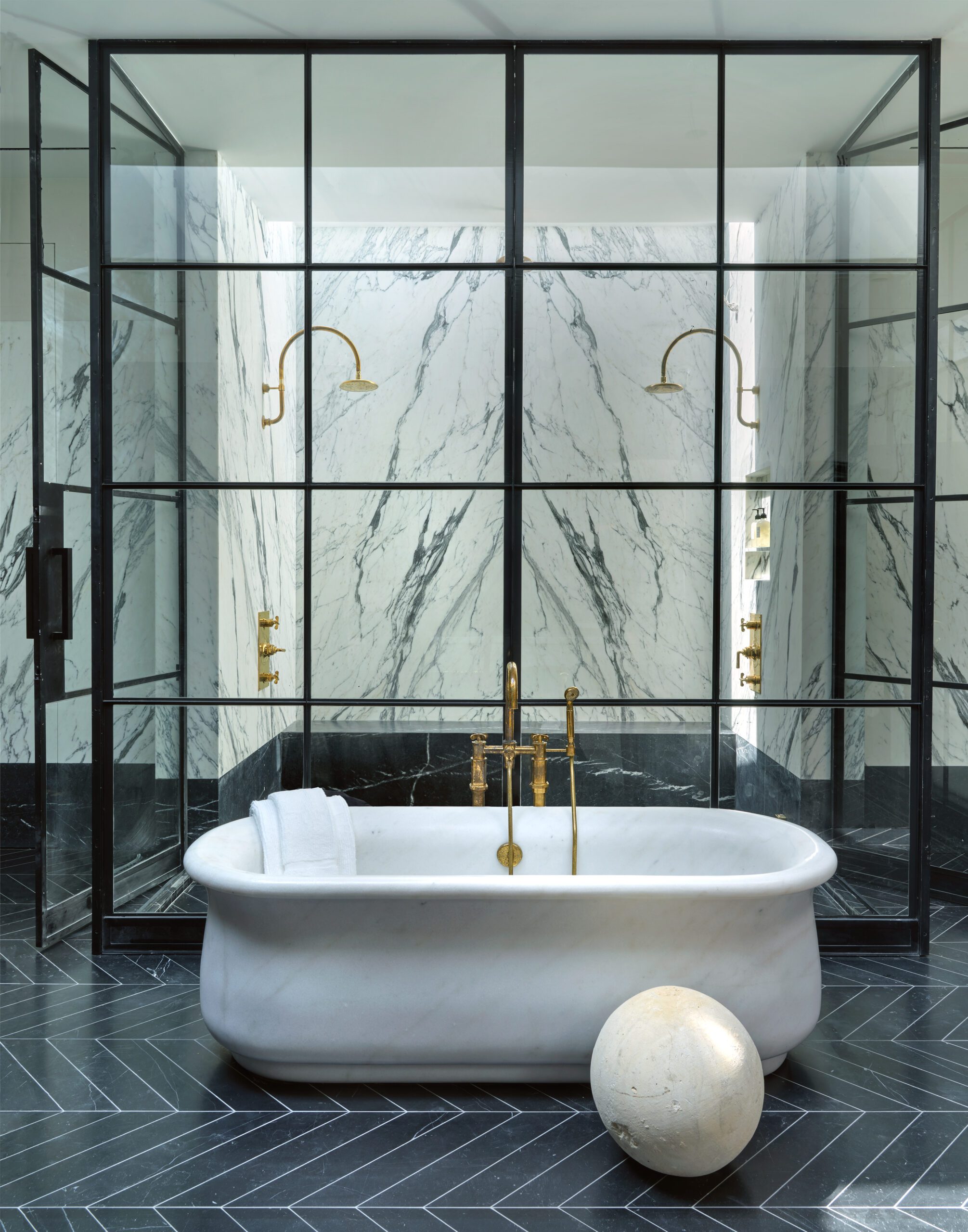How many of us swore to ourselves that when we grew up, we wouldn’t furnish our houses the same way our parents did? Call it a declaration of decorating independence—the inalienable right of each new generation to reject chintz, midcentury modern, or whatever furniture Mom and Dad picked out back in the day. Married couple Kevin and Nahal Danesh admit that for them, this is absolutely the case. Both born in Iran, as young children they immigrated with their respective families to Los Angeles, where they grew up in the area’s Persian American Jewish community. They were introduced by mutual friends during their senior year of college (he was at UCLA, she was at USC), and, says Nahal, “we’ve basically been together ever since.”
“EVERY DECISION THEY MADE WAS ROOTED IN COMFORT AND PERSONALIZATION.”
Brentwood, California
Later, as a married couple feathering their nest together, the two realized yet another important commonality. Nahal and Kevin say they had little interest in retreading the type of furnishings they both grew up with—a look they affectionately describe as “very ornate,” “very Louis XVI,” “very gold-accented,” and “very bring-it-from-Iran.”
“No disrespect intended,” laughs Kevin, an attorney, “but we did not want a home that looked like our parents’!” The houses they admired tended to have clean lines, natural wood, neutral palettes, and plenty of breathing room. “We loved the same kind of serene, modern houses,” says Nahal, a dietitian. The more they looked, the more they realized they were drawn to the work of one architect in particular: Los Angeles–based William Hefner. “His homes feel beautiful and timeless,” notes Nahal. “So we pursued him.”
“We 1,000 percent stalked him,” adds Kevin.
The couple originally approached Hefner about remodeling their existing home in Beverly Hills, a project he turned down due to its scope. Over the next few years, they periodically checked in with him to see if any of the houses he had built were coming up for sale. (“We almost closed a deal to buy one, but it fell through,” says Kevin.) Finally, in 2018, the couple found an ideal property with a deep, flat lot in Brentwood. “We were like, Thank God! Maybe now we can get William to build us a house!” recalls Kevin.
Completed in August of 2022, the structure Hefner designed is a classic Mediterranean-style house of brick and stone laid out in an L shape around a courtyard—but with an arresting sleek glass-and-steel wing across its middle. “I loved that Kevin and Nahal were open to trying something different,” says the architect, who describes his imagined narrative of the house as a centuries-old building in rural France updated with a modern extension.
“It’s these moments of juxtaposition when things get interesting,” he says. Wide arched passageways, tall arched windows, and monumental glass-and-steel doors that open directly into the backyard and courtyard erase the boundary between indoors and out and flood the house with sunlight. The swooping pearl-white plaster central staircase—a pet project of Nahal’s—is arguably the most impactful statement, providing a sculptural counterpoint to the square lines of the house and emphasizing the connection between the upper and lower levels.
When it came to the interior design of the house, the Daneshes discovered another design crush in Jeremiah Brent, the AD100 designer whose luxuriously low-key modern aesthetic and unapologetic affection for soothing beiges, chalky whites, and grays intersected perfectly with theirs. “Jeremiah understood exactly what we wanted, but he also managed to push us out of our comfort zone,” says Kevin, who credits the designer for talking him into installing the antique black marble fireplace mantel in the primary bedroom and opening his mind to the beauty of vintage lighting.
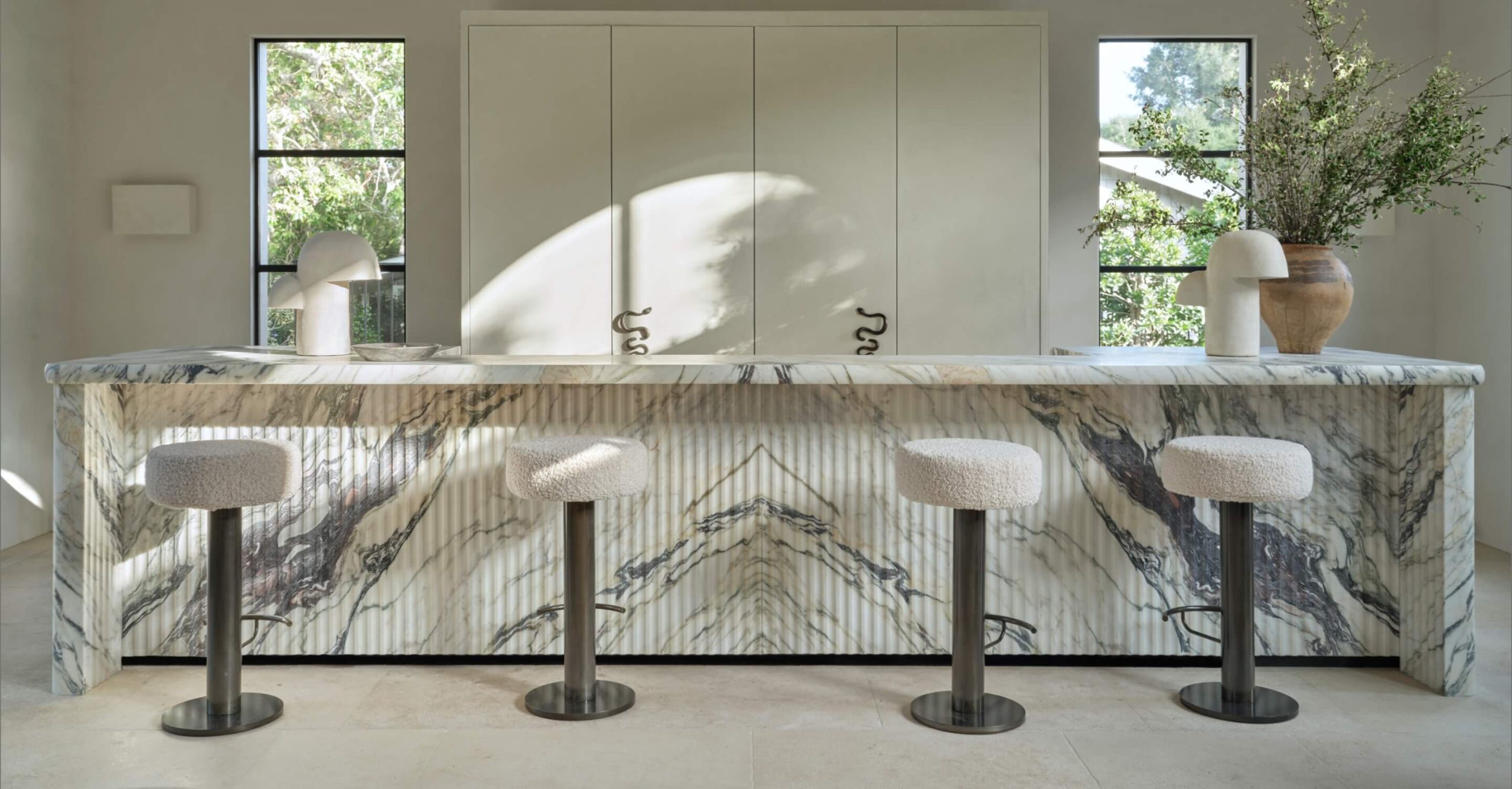
Custom Bar in the Formal Living
For Brent, no aspect proved too small, too large, or too infuriating. He designed the elegant bronze snake handles adorning the bar’s cabinetry but also wrestled with the contractors for weeks to get the house’s exterior bricks cut, washed, and rewashed to achieve the perfect impression of centuries-old weathering.
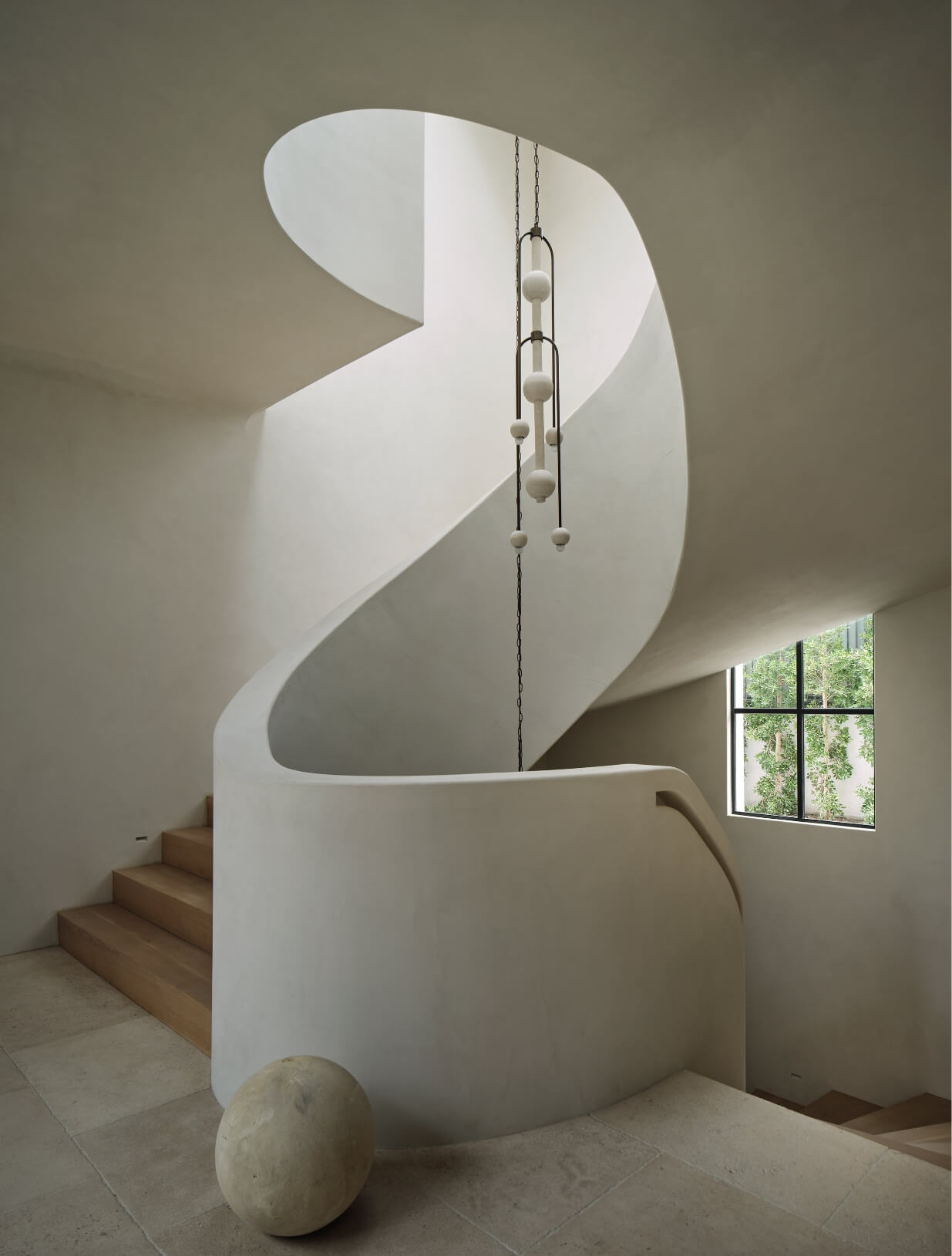
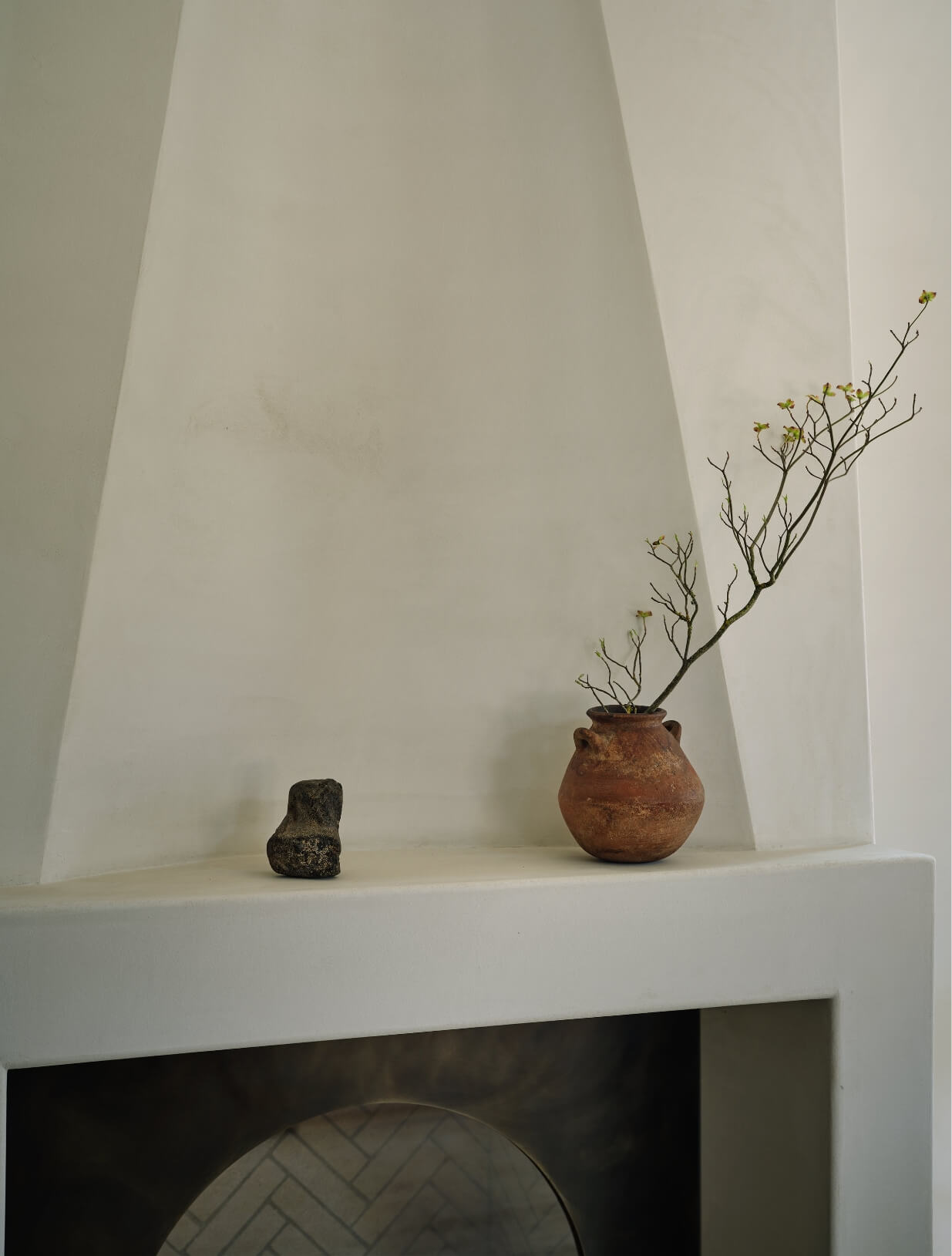
Detailed look into the Entry and Living room.
He also brought to life what might be the best-used dining room in the neighborhood. Here, around a custom white oak table that comfortably seats 16, the family hosts a lively Shabbat dinner for their parents, siblings, in-laws, nieces, and nephews (all of whom are based in LA) once a month. When the dinners run to 20 guests or more (a not uncommon event), tray tables are brought out and the sleek upholstered banquette is put into service.
“Kevin and Nahal may have rebelled against their parents’ decorating style, but the truth is, everything they’ve done here is with their extended family in mind,” says Brent. “Every decision they made was rooted in comfort and personalization.” In other words, it’s a house built on love and tradition—even if there are no Persian carpets in sight.
Primary Bed and Bath
“Jeremiah underStood exactly what we wanted, but he also managed to push us out of our comfort zone”
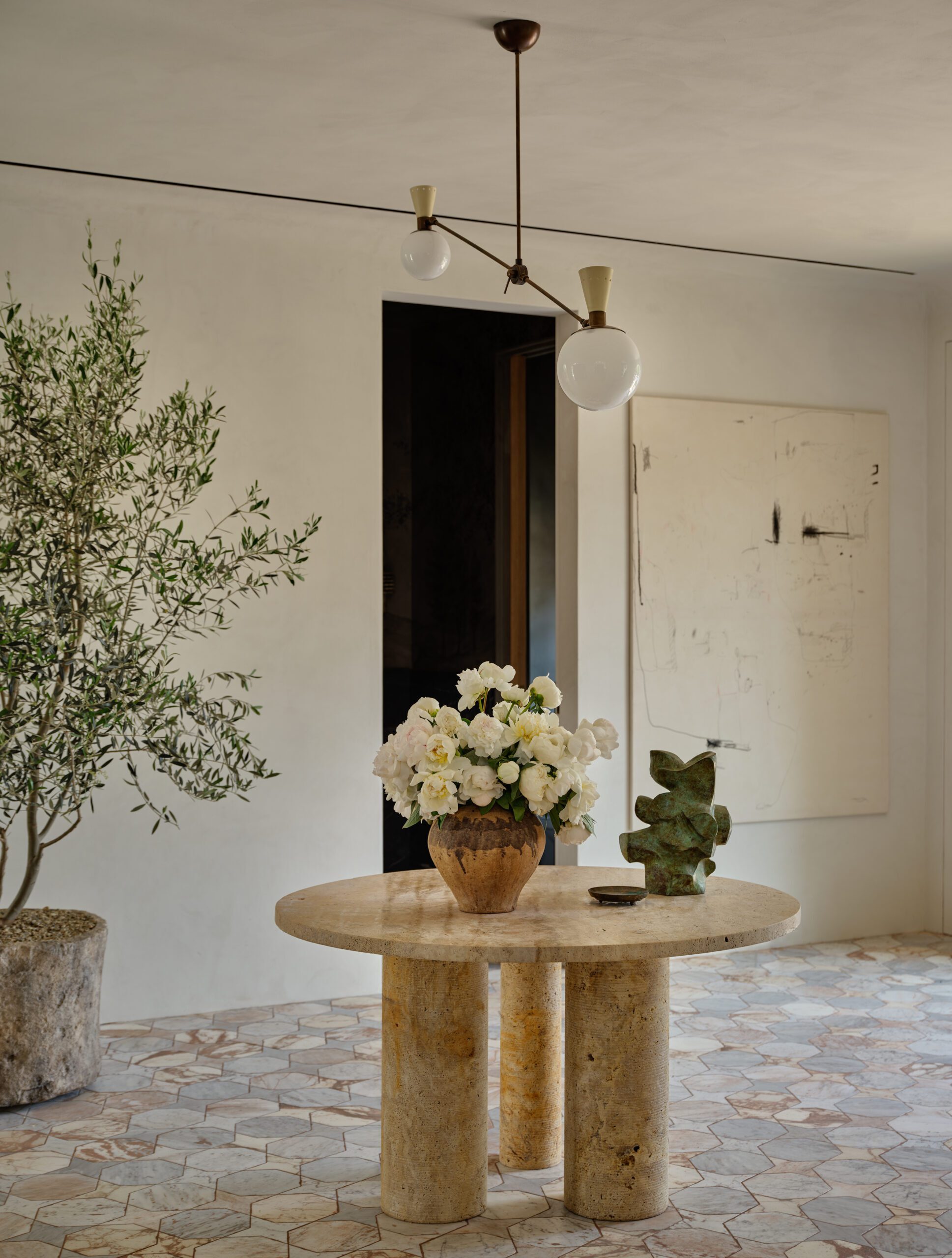
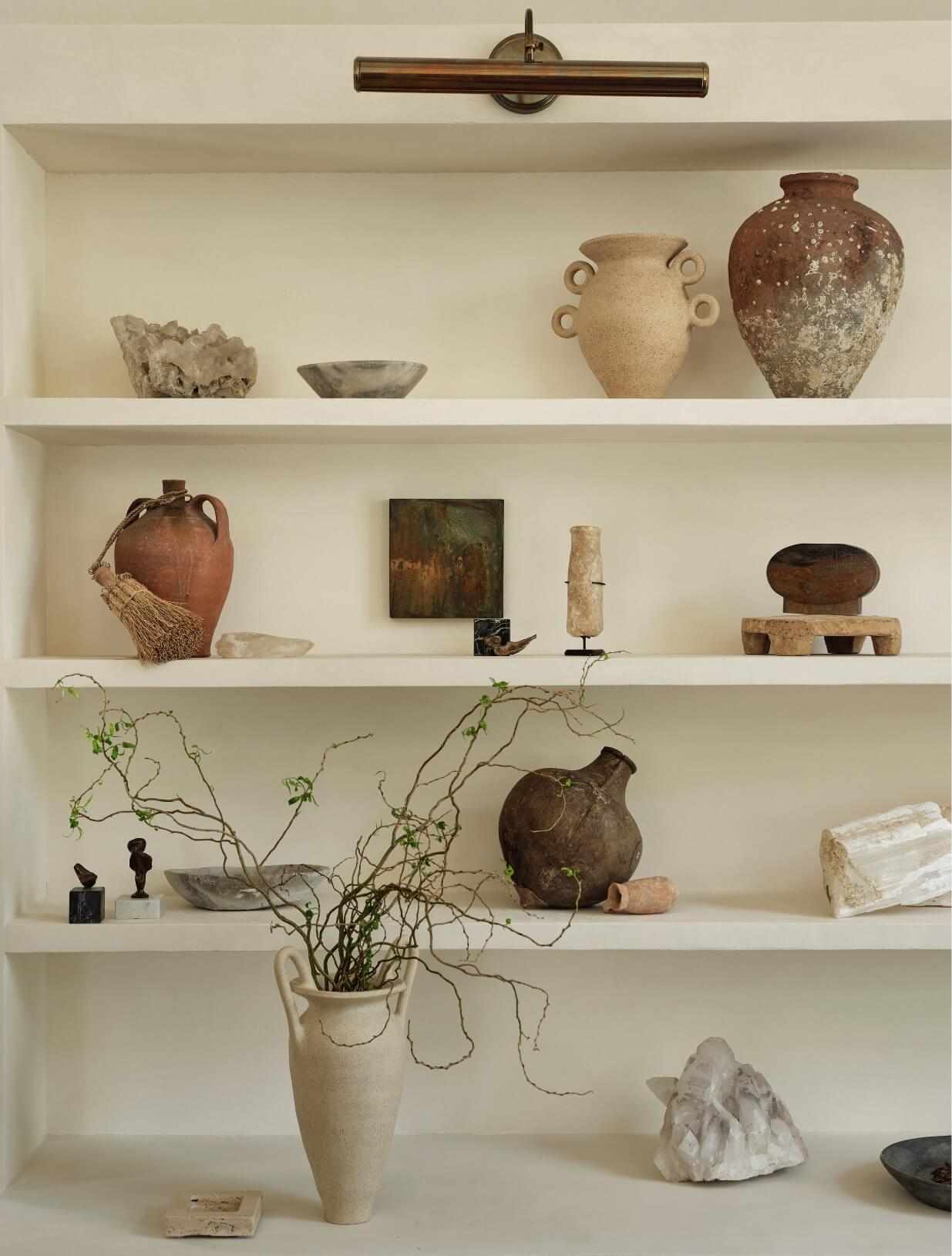
Photography by Trevor Tondro

